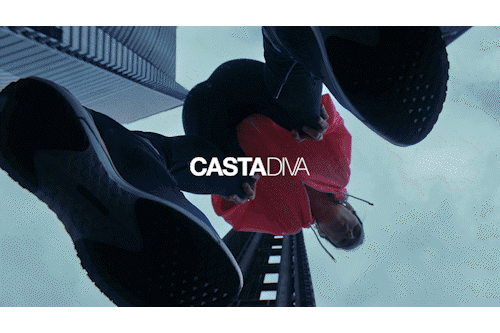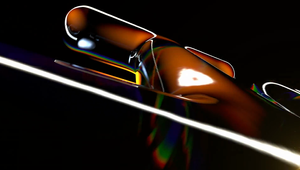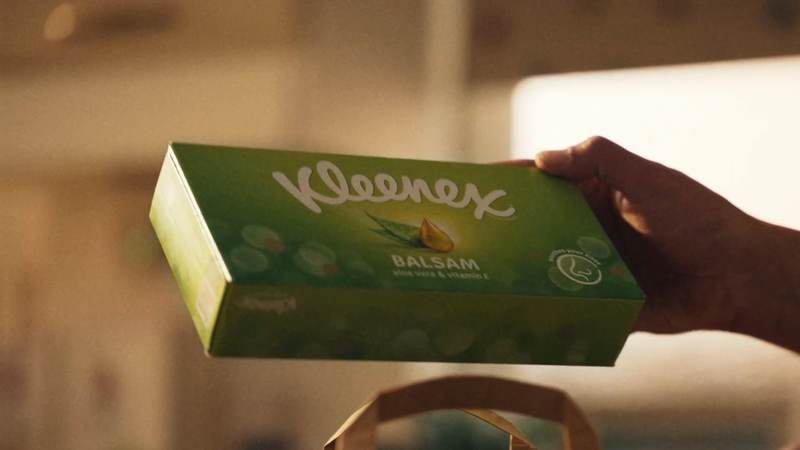
Uprising: Andy Isaias Never Stays Still

Sound captured the attention of Factory’s assistant engineer Andy Isaias right from the beginning. He started taking violin lessons at five years old and while he was no Itzhak Perlman, these lessons did inspire him to learn the piano.
A natural self-starter, Andy began teaching himself to play by ear on a keyboard he received as a Christmas present from his parents. In fact, his dad was integral to the start of his journey in music and sound. “I spent a lot of time with my dad, pulling apart music tracks on his old Sony CFD-222 boombox. I remember it had a 'Megabass' mode, which the neighbors probably didn’t appreciate. My dad was pretty knowledgeable about music. He was always into his music tech, and I think he wanted to pursue a creative field himself but never got the opportunity,” he says.
Growing up, Andy knew that he would lean into creativity rather than academia. During his time at school, he had a period of wanting to go into stop-motion animation. He even had a go at making a couple of ten-second videos using Blu Tack and plasticine: “They were awful”, he laughs, “but they marked the start of my passion for creative production.”
It was around the age of 14 when Andy started learning guitar properly. He loved experimenting with different guitar tones and pedals, trying to match the sounds of players like John Frusciante and David Gilmour. “Looking back, this is where my love for manipulating sound began – playing with EQs, reverbs and anything else I could get my hands on.”
In Andy’s college days, he took on some academic subjects that, in hindsight, he didn’t enjoy. His college had a practice room for guitar lessons, and he would often skip chemistry classes, to instead, practice there. At that point Andy met a guitar teacher, an important figure in his early life and one that would push him in the right direction. “My guitar teacher, Paul Yarrow suggested I switch to the music tech course. I didn’t even know it existed! Once I started the course, everything clicked. I was doing really well academically for the first time, particularly in creative sound design.”
From there, Andy pursued sound further through a BA and then an MA. It gave him the time to experiment and refine a unique style and sound, as well as learning how to collaborate with others. “During my undergraduate years, music students would often bring me their unfinished tracks to mix, record, and finesse. You learn quite quickly when you're building someone else's vision, that meeting in the middle is key. During my MA, I met a lot of exceptionally talented people, and it was amazing to grow alongside them.”
As Andy’s skills were improving, he began to notice where he most excelled: “I discovered a knack for detail oriented and textural sound design – my attention to detail is one of my
strengths. My past experience in music production really helped me with this. I also love incorporating musical and tonal elements into my sound design, and that’s something I’m always working on.”
After university, he moved to Ramsgate Harbour to help a friend, Filipe Gomes, build his studio, Arco Barco. A far fetch from good old smoggy London! “For a London boy, living and working on a harbor was a unique experience. Building the studio taught me about acoustics and how sound interacts with a space – insights I wouldn’t have gained otherwise. It was also my first paid work within sound.”
At the time, Filipe was involved in theater projects, so Andy helped create the sound design for these productions. He explains: “Seeing my work out in the world was rewarding, even if it came with challenges like waterproofing sound systems in downpours, and live mixing in unconventional places like churchyards. I've come to prefer the comfort of a studio now.”
Eventually, an old friend from college helped Andy land a runner position in Soho, which felt like a foot in the door of the industry. “I didn’t really know what a runner did, but I knew it was an opportunity.” His runner stint spanned several facilities, before joining the team at Jungle Studios, where he progressed to transfer engineer and eventually began working on short films.
The first industry project Andy worked on was a short film called ‘Ella’, directed by Phoebe Arnstein. “It was the perfect film to start with. It was so beautifully shot and recorded that it just needed to be tidied and balanced. It needed to feel intimate, natural and almost like an internal monologue. Each element had to be done well, as there's nowhere to hide in the mix. I just loved the simplicity of it.” Years later and it’s still one of Andy’s favorite projects to look back on.
When covid 19 hit, Andy, like many in the industry, was made redundant and had to try his hand at freelancing. Discussing this time of his career, he says: “I freelanced on indie games, creating sound assets. It was a completely new field for me, and while I enjoyed it, I wanted to get back into the industry.” Once restrictions began to ease off, Andy spent some time working at 750mph before moving to Factory Studios, to take on the role of Transfer Engineer.
Talking about what it was about Factory that appealed to Andy, he explains, "I've always loved the work Factory Studios puts out, but it's their focus on creativity and craftsmanship that really drew me in. The engineers here are encouraged to push boundaries, try new things, and constantly evolve – both creatively and technically. The environment is always moving forward, and there’s a strong emphasis on collaboration between the tech, production, and engineering teams, which keeps ideas fresh.”
Since being at Factory, Andy has been across a wide variety of projects. Recently, he worked on the short film, ‘Ryan Can’t Read’, directed by Rhys Chapman and produced by Slick Films. Set in Liverpool, the story follows Ryan’s struggles with illiteracy and grief.

Discussing the film, Andy recalls: “It's a beautiful film with an important message, and so well shot and written. Much like ‘Ella’, it needed to sound naturalistic and not distract from what's happening on screen, but I also wanted to emphasize and heighten certain moments through sound design. I really wanted the soundtrack to do it justice. The film went on to win several awards and even qualified for consideration at the 97th Academy Awards – it’s a project I’m incredibly proud of!”
Andy then went on to work on Disney’s widely-praised ‘The Boy and the Octopus’, directed by Taika Waititi for adam&eveDDB, where he worked side by side with senior sound designer and owner of Factory Studios, Anthony Moore. They recently took home Bronze for Sound Design at The British Arrows 2025.
Designing the voice for Blub the octopus was a highlight for Andy: “The creatives, Rick Gayton and Darren Beresford wanted to make Blub's voice unique but lovable. A lot of trial and error went into it, but the final sound was a mix of me talking into a bowl of water, and some Pro Tools processing. The final voice felt emotive and got the point across while still feeling not-so-human, but also incredibly cute.”
He continues, “I love working on abstract sound design. Foley is great, but there is something magical about twisting and manipulating sound to create something entirely new. Seeing it come together on screen… That never gets old.”
Another project of Andy’s was his recent set of Heinz spots. Delving into the creative process, he says that “these spots were super fun to work on, director Bonnie Mcrae was happy to try out different approaches which meant we got the best out of the sound and music.”
“I did both the sound design and re-composed some lullabies for the score, which added a little bit of levity and innocence to them." The premise behind the project was that Heinz pouches can be enjoyed by everybody, babies and adults alike.
He adds: “I also had to come up with some fun sounds for the slurping of the pouches… I ate way more baby food than I'd care to admit when doing the foley.” At least he can now attest to the spot’s messaging!
To make sure his work is never stale, Andy is always pulling inspiration from a myriad of sources, including his favourite music producers. “Artists like Lapalux, Rival Consoles, Jon Hopkins, Iglooghost – their mixes are impressive for different reasons. Some are ultra clean and punchy, others are lo-fi and gritty but in the right way. It helps to keep me focused on what I'm aiming for. I think it's important to always reference what you're doing - It's easy to get lost in the weeds trying to chase the wrong sound.”
Andy also pulls inspiration from his favourite games: “I play way too much PlayStation, but my excuse is that it's all research,” he admits. Andy continues, “For me, when sound is done well in a game, it's some of the best examples of it in media. Games like ‘Returnal’ and ‘God of War’ are standouts for me. To be able to not only pick the right sounds, but to also mix it well in a non-linear way is super hard to do, so it's even more impressive to me when it's done well.”
It’s not just at work where Andy showcases his sound talents – his home life is just as musical. “When I’m not working, I’m still making music – electronic, ambient, and glitchy stuff. Giving myself creative constraints, like sticking to a small number of tracks, recording to tape or writing to a specific length, helps me stay focused.”
“I'm always challenging myself,” he says. “I want to be constantly building on my last mix. To be honest, I don't like staying still in general! I get antsy if I've not tried delving into something new in a while. So, I’m loving working alongside lots of different and incredibly talented people who are shaping the media landscape. The level of work being produced in the UK right now is pretty inspiring, and I’m constantly in awe of the fresh talent emerging around me. There’s definitely a growing sense of innovation in new directors and creatives willing to push and try something new. I'm excited to be part of this new wave of creativity and see where it all leads!”















